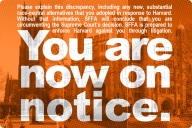You have /5 articles left.
Sign up for a free account or log in.
When admissions officers gather to create a freshman class, there is a large elephant in the room, wrote Jennifer Delahunty Britz, in The New York Times last week: the desire to minimize gender imbalance in their classes. Britz, the admissions dean at Kenyon College, wrote that her institution gets far more applications from women than from men and that, as a result, men are "more valued applicants." Britz discussed a female candidate who was considered borderline by the Kenyon team but who -- had she been a he -- would have been admitted without hesitation.
Why is it important to favor male applicants? "Beyond the availability of dance partners for the winter formal, gender balance matters in ways both large and small on a residential college campus. Once you become decidedly female in enrollment, fewer males and, as it turns out, fewer females find your campus attractive," Britz wrote.
The gender gap in undergraduate enrollments is, of course, no secret in academe. Women are solidly in the majority (about 57 percent nationally) and their percentages are only expected to increase in the years ahead. The gender gap first started to show up -- more than a decade ago -- at liberal arts colleges, with educators guessing that men preferred larger institutions or the engineering and business programs more prevalent at universities. But recently, the gap has started to show up at flagship public universities, too: Some board members at the University of North Carolina at Chapel Hill were so stunned in May to learn that this year's freshman class would be 58 percent female that they asked if it was time to institute affirmative action for men.
Chapel Hill isn't going that route, but Kenyon is. And while Britz's column stunned many applicants and parents and frustrated many advocates for women, its substance didn't surprise admissions officers. While few admissions officers wanted to talk publicly about the column, the private reaction was a mix of "of course male applicants get some help" along with "did she have to share that information with the world?"
Is It Legal?
Lawyers who work on higher education law were also intrigued by issues raised by the column, but most wanted to talk on background and more than one asked a variation of the question "did her president know she was going to write that?"
The reality is, however, that Kenyon is unlikely to face any legal problems for its policies -- although if Chapel Hill took the advice of those trustees who wanted to adopt a pro-testosterone admissions policy, it would be in trouble. Title IX of the Education Amendments of 1972 bars gender discrimination in all education programs at institutions receiving federal funds (all but a handful of colleges). But Title IX has an important exemption: On admissions decisions, the statute covers all vocational, graduate and professional programs, but for undergraduate admissions, it applies only to public institutions. Kenyon, as a private institution, isn't covered.
Private institutions are covered in terms of how they treat students once they are admitted, and that includes athletics. That could be relevant to the admissions issue because one reason cited by advocates for affirmative action for men in admissions (although not cited by the Kenyon dean) is that a lopsided gender ratio in enrollments can make it more difficult to comply with Title IX in athletics. That's because the most straightforward way to comply with Title IX's rules for athletics participation is to demonstrate "proportionality" -- that the percentage of female athletes is roughly the same as the proportion of female undergraduates. Institutions that are majority female and that have a football team often find proportionality daunting.
Several lawyers familiar with Title IX said on background that they found intriguing and potentially illegal the scenario where a private institution favored male applicants (in theory legal) to build male enrollments so that sports programs for men could be protected over programs for women (potentially illegal).
The Education Department's Office for Civil Rights is charged with enforcing Title IX, and released written answers to questions prompted by the Kenyon column. At a public institution, the department said, regulations "prohibit treating individuals differently on the basis of sex, including giving preferences on the basis of sex." The only exception to this, the department said, would be "affirmative action to overcome the effects of conditions that resulted in limited participation in the recipient's education program by person's of one sex."
The Supreme Court has never ruled on the use of gender-based affirmative action in higher education. But the OCR statement noted that in the Supreme Court's 1996 decision finding that Virginia Military Institute, as a public institution, could not deny admission to women, the justices said that under the Constitution, any public institution using gender-based distinctions in admissions needed an "exceedingly persuasive justification" that was "substantially related" to an "important government interest." While trying to read the minds of Supreme Court justices is risky, it seems hard to imagine that Justice Ruth Bader Ginsberg, author of the decision, was thinking about a good ratio of dance partners as such a government interest.
In 1999, the University of Georgia was sued by a white woman for its use of an admissions formula that gave extra points for being male and/or a minority applicant. Had the woman been a black man, the extra points for race and gender would have put her above the admissions cutoff level, but she was instead rejected. Even before a federal judge rejected Georgia's system as unconstitutional, the university stopped awarding the extra points to men, although it tried without success to defend the way it was using race in admissions.
Affirmative action in college admissions has been subject to much litigation, but the focus has been on race and ethnicity. In the landmark decision in 2003 upholding the right of colleges to use race in admissions, Justice Sandra Day O'Connor wrote that limited use of affirmative action was justified to create a critical mass in a student body, because of the educational value of such diversity. But her decision stressed the limited way race was used by the law school at the University of Michigan, and the Supreme Court at the same time rejected a system used in undergraduate admissions at Michigan that relied more heavily on race and ethnicity.
Some lawyers cautioned against viewing gender and race in admissions in the same legal terms because the Supreme Court has generally subjected racial distinctions to the highest scrutiny. But others -- especially critics of affirmative action -- said that if the O'Connor standards were applied to gender, public colleges could be in trouble for favoring men, since no one is suggesting that there isn't a critical mass of men in higher education.
Roger Clegg, president and general counsel of the Center for Equal Opportunity, a group opposed to affirmative action, said policies like Kenyon's "should not be legal." He said that O'Connor was apparently swayed by educators' arguments that if they didn't reach some figure -- say 5 percent -- in terms of black enrollment, qualified black students would enroll elsewhere. "But there's no way you can say that without affirmative action for men, you wouldn't have some minimum level," he said.
Is it Right?
Just because private colleges appear to have the legal right to favor men in admissions, that doesn't mean that they should necessarily do so. But many admissions officials say that policies like that at Kenyon are entirely appropriate.
Joyce Smith, executive director of the National Association for College Admission Counseling, said that the uproar over the Kenyon column misses the reality that admissions officers favor all kinds of groups. "Institutions want to have a diverse class and you want all kinds of representation," she said. Smith noted that many colleges have outreach programs for women in math and science programs, and said that the social realities of a college class are a real factor.
"If you have a dance, you have to have enough folks to dance with," she said.
At Kenyon, while there is a gap, dancing is probably still possible. The college currently has 770 men and 870 women -- a gap of under 5 percent. But the gap is larger in applications (1,848 from men and 2,400 from women). In terms of applicant quality, female admitted students topped male applicants on the verbal portion of the SAT, 705 to 681, while men bested the women on the math section by a smaller margin, 675 to 665.
To the extent that Kenyon is favoring male applicants, that poses both personal and professional concerns for Jocelyn Samuels. She is vice president for education and employment at the National Women's Law Center and has a daughter who is waiting to find out if Kenyon has admitted her for the fall.
Samuels said that she believes strongly in the value of diversity, and that one reason that it was important to have a critical mass of students from different genders or races or ethnicities is so that no one single black person or female or male student must speak for all -- as any one person couldn't do, given the diversity within genders, races, etc. But Samuels noted that the arguments being put forward by colleges -- about social life and student perceptions of campuses as too female -- weren't educational in nature.
"I think stereotyping of any sort is a dangerous business and saying that men won't come to a campus that is dominated by females is the kind of stereotypical thinking that Title IX was intended to prohibit," she said. She said that she found it "legally problematic" and "missing the point of the educational reasons that the Supreme Court has authorized schools to take race and gender into account" for colleges to be justifying discrimination by saying "we want to make sure our students can get dates."
Katha Pollitt, a columnist for The Nation, was so angry when she read the column in The Times that she fired off e-mail messages to Kenyon's president and a women's studies listserv, and posted comments on The Nation's blog. In an interview, she called the male favoritism "scandalous," and said people would never stand for the equivalent logic about other groups. "Boys won't apply to schools that are too majority female? What about whites? What about Christians applying to schools where there are so many Jews. It's saying that the market place forces [admissions officers] to discriminate. I think it's shameful."
Pollitt also said that these policies debase affirmative action, which she strongly supports. "Affirmative action is intended to remedy past discrimination. There is no past discrimination against white males," she said. She also sees these policies as defining the college experience as social, not educational. "Is this an intellectual endeavor or the prom committee?"
Others were bothered by the column for other reasons.
Barmak Nassirian, associate executive director of the American Association of Collegiate Registrars and Admissions Officers, said that he definitely sees "consciousness within the profession" about the gender gap in applications, and that the gap has grown large enough at some institutions to cause real concern. But he questioned whether there is really as much unfairness as many people assume because of the Kenyon article. If colleges were so willing to favor men, Nassirian said, there are still enough men applying to college that institutions would be 50-50 on enrollment, and they're not.
More broadly, he said that the discussion is reinforcing a false sense about college admissions -- a sense that is always more of a problem in this time of year, as students await answers from colleges. People have an "idealized image of admissions" in which all the applicants are lined up in some kind of precise, merit-based order and when an admissions dean has lined up her class, she figures out how many slots she has, walks down the line to the appropriate place, and admits everyone on one side and rejects the rest.
"There is no line, and there's no real consensus on merit," he said. "If everyone at the top of this imagined line is a cello player majoring in nursing, you will skip over the next cello player wanting to be a nurse," he said. Nassirian noted that there are colleges with strong math-science programs and weaker humanities programs, so would-be poets might have an edge over an engineer. It's all about context, he says, but now the public will again think there is a magic formula, benefiting men.
For her part, Pollitt hopes that not just women, but men will be angered by policies like that described at Kenyon. "I wouldn't apply there," said Pollitt (who was admitted from an all-female applicant pool at Radcliffe College), "and the flip side is that if I was a boy, I wouldn't want to apply either. Now we know that the boys who go there are stupid."








